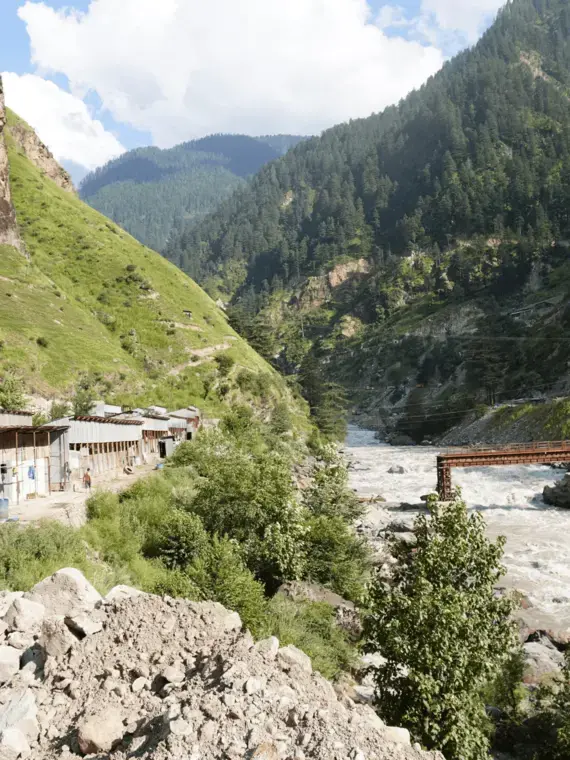India is constructing seven new dams in Kishtwar, a region of dense forest in Indian-administered Kashmir. Work on four dams has started. These dams will generate 5,190 MW of hydroelectricity, but building these dams will affect 20,000 locals, including members of Indigenous communities (Gujjars, Bakerwals) who are dependent on agriculture and forests for survival. In the coming years, these families will end up in extreme poverty, with food scarcity, and in debt due to forced displacement and the meager compensation given by the government.
From Kashmir, the Chenab River flows into Pakistan. The Indus Waters Treaty signed between India and Pakistan in 1960 allocates three eastern rivers to India and three western rivers to Pakistan. The treaty allows India to build dams without disrupting water flow to Pakistan. But after India removed the special status of Kashmir in 2019, the conflict over water usage, especially on the Chenab River, has escalated.
Pakistan is one of the most water-stressed countries and can face a shortage of 31 million acre-feet of water by 2025. If India disrupts the natural flow of rivers with dams, it will affect the country severely. A 2018 study also declared the Himalayas one of the highest seismic zones.
This project is a cross-border collaboration between Kashmiri and Pakistani journalists highlighting the impact of these dams on humans and on the environment.









